The Val Grande is the largest of the valleys in Valsesia, in the province of Vercelli: traversed by the Sesia River, it is famous not only for the marvelous landscape it offers to anyone who crosses it, but above all because it is dotted with small and characteristic villages that hold true historical and artistic treasures that deserve to be admired. The valley stretches from Varallo to the slopes of Monte Rosa and offers itineraries that give those who travel through it the opportunity to combine nature, art and culture at the same time because the artistic beauties are nestled among the natural beauty. In fact, it is not difficult to encounter splendid churches along the way: and here the “artistic” stop immediately becomes inevitable. At least four of these are certainly worth mentioning, located in four different places: the Parish Church of San Michele Arcangelo in Riva Valdobbia, the Parish Church of Santo Stefano in Piode, the Church of San Giacomo Maggiore in Campertogno, and the Parish Church of San Giovanni Battista in Alagna Valsesia.
Considered a national monument, the Parish Church of St. Michael the Archangel is located in the center of the small mountain town of Riva Valdobbia, a hamlet of the municipality of Alagna Valsesia. The present building is due to a remodeling of the15th-century oratory of Santa Maria. Originally the parish church of Riva was located near the Vogna stream, consecrated in 1326, but this was destroyed in 1640 by a flood of the stream, so the inhabitants chose the oratory of Santa Maria as the main church, and rebuilt it in its present appearance, enlarging it and also adding a second bell tower. Inside are fine paintings and sculptures, such as theAssumption of the Virgin painted in fresco on the dome by Carlo Borsetti and a 15th-century statue depicting the Madonna and Child, as well as the baptismal font dated between the 11th and 12th centuries and a stone bas-relief, but what makes the parish church famous is the splendid fresco that occupies the entire facade. The work of the workshop of the D’Enrico di Alagna (Tanzio da Varallo’s family), it depicts the Last Judgment and Saint Christopher: in the center, above the ogival arch of the door, Saint Michael the Archangel weighs the souls for the Final Judgment, on one side the damned and on the other the blessed; on the left, on the bell tower, is the monumental Saint Christopher, patron saint of Valsesia and protector of wayfarers. At the top stands Christ with the symbols of the Passion and, a little further down, Our Lady and John the Baptist. Then the figures of apostles and saints with hosts of angels are noted.
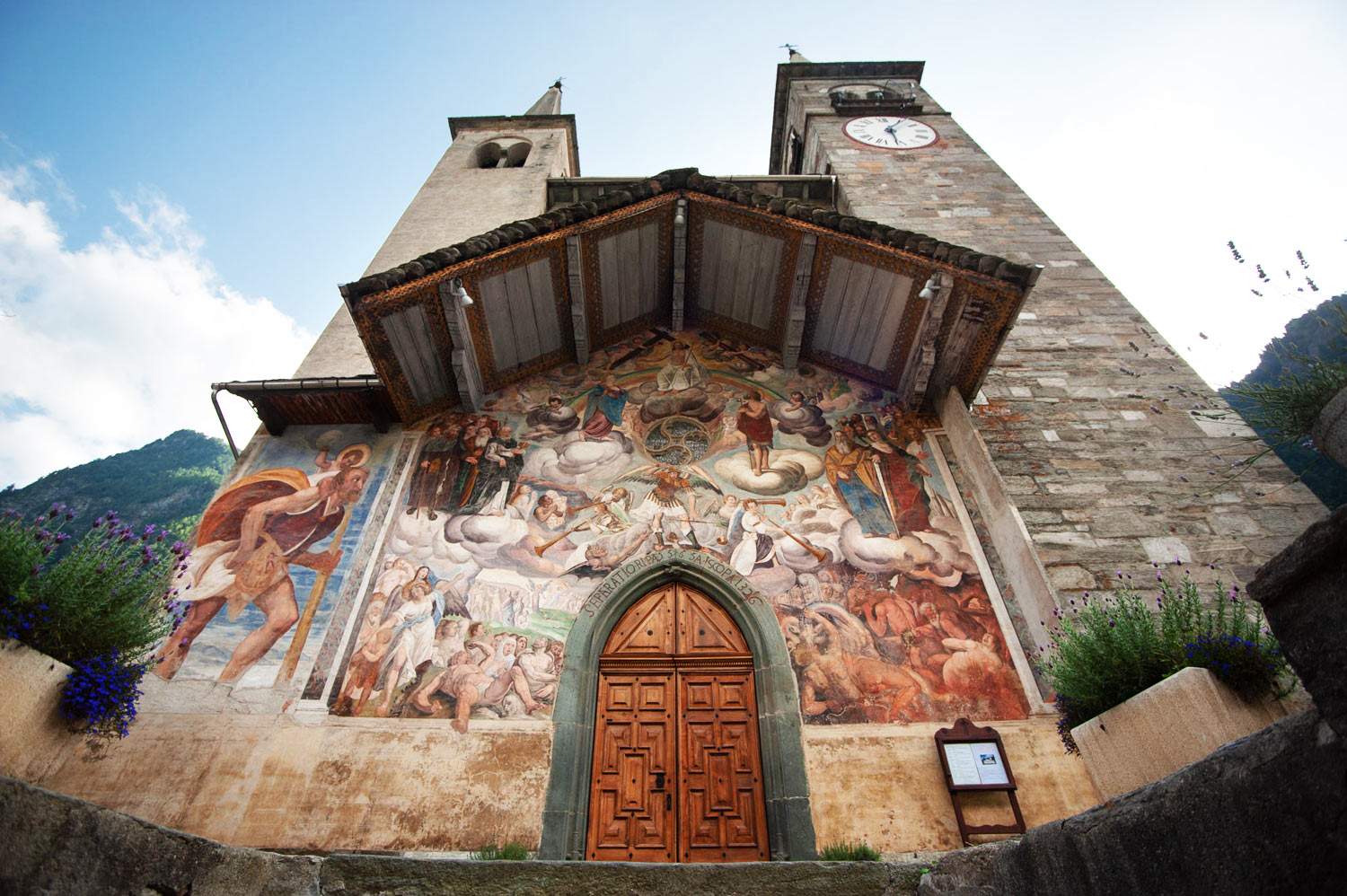
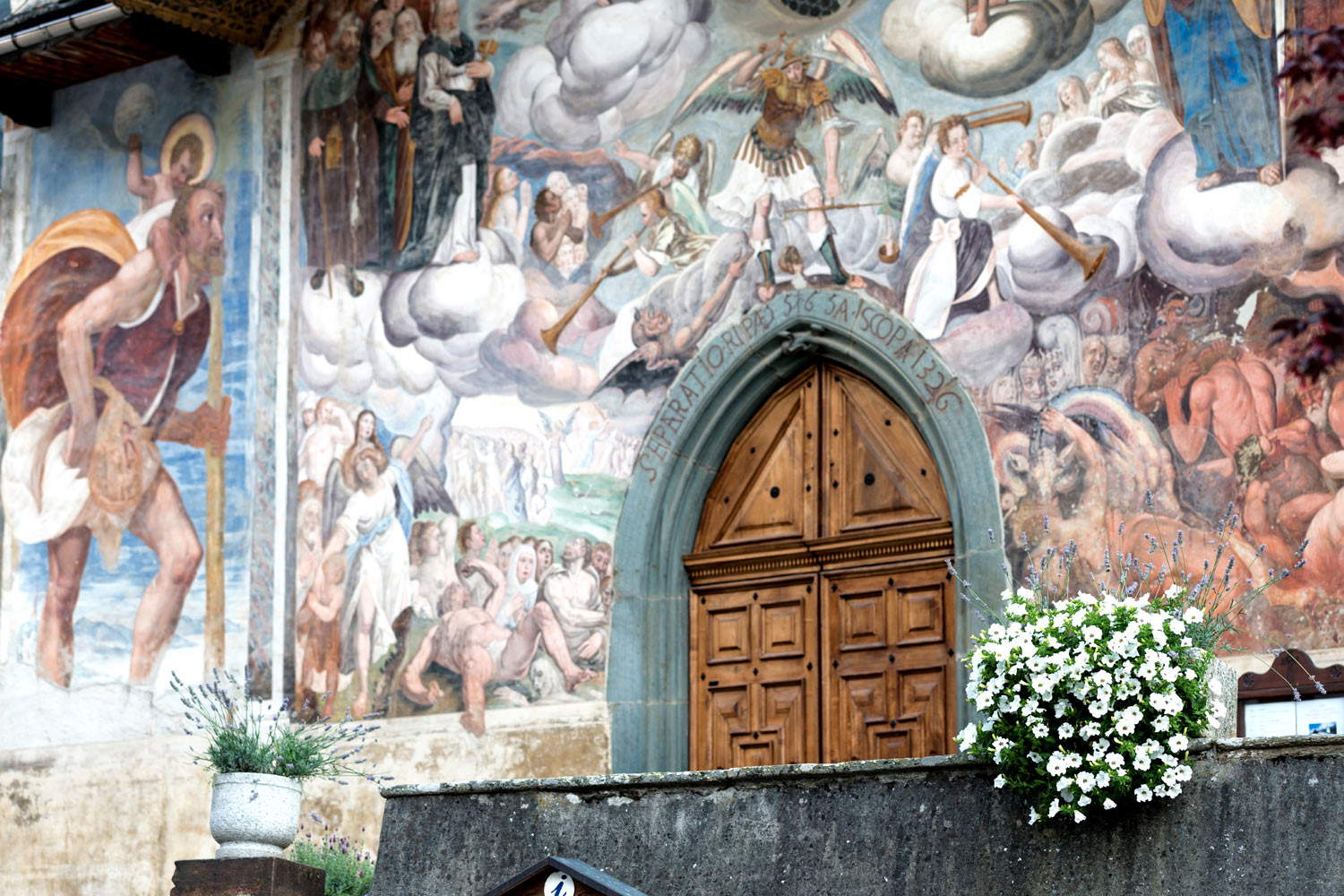
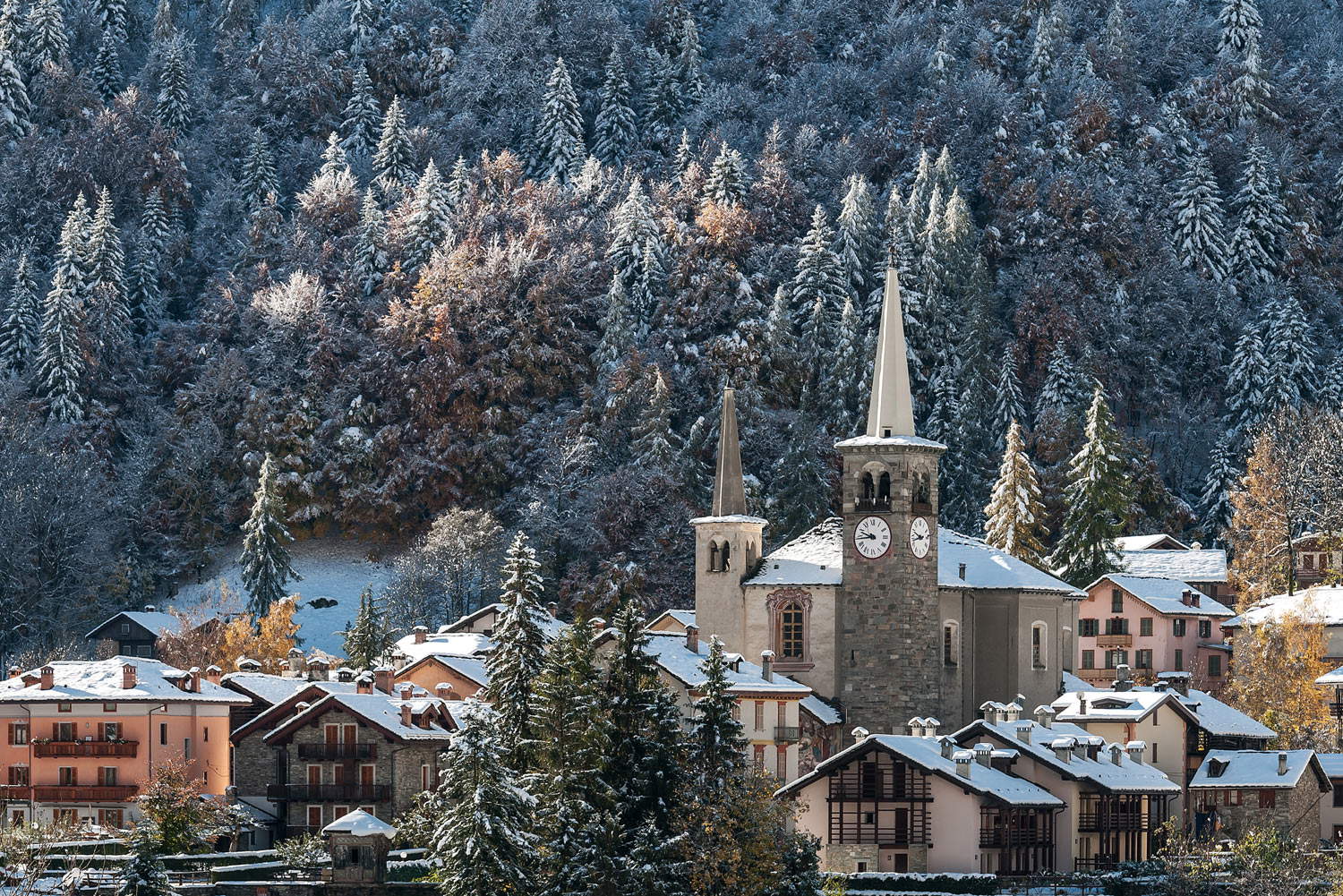
Dedicated to St. Stephen, this is the parish church of Piode, a single-nave church with barrel vaults and a tall square bell tower; inside, in the middle of the nave, there is a large central vault with an ellipsoidal shape and two side altars. In Baroque style dating from the late 12th to early 18th century and finished around 1748, the building was constructed of stone, river pebbles and mortar. The facade depicts the Martyrdom of St. Stephen, while inside the vault is frescoed with the Glory of the Saint. Eighteenth-century artists, on the other hand, are the authors of the pictorial works, such as the Nativity and the Presentation of Jesus in the Temple by Giovanni Milocco in the chancel, Antonio Orgiazzi ’s three ovals depicting St. Apollonia, St. Rocco and Blessed Panacea along the nave, Lorenzo Peracino di Cellio ’s paintings of the Stations of the Cross, and three paintings by Pier Francesco Gianoli with St. Bartholomew, St. Peter and St. Paul. Also worth seeing is the late 19th-century organ by the Novara workshop of Alessandro Mentasti and, behind the high altar, the Gaudenzian school altarpiece with the Marriage of St. Catherine.
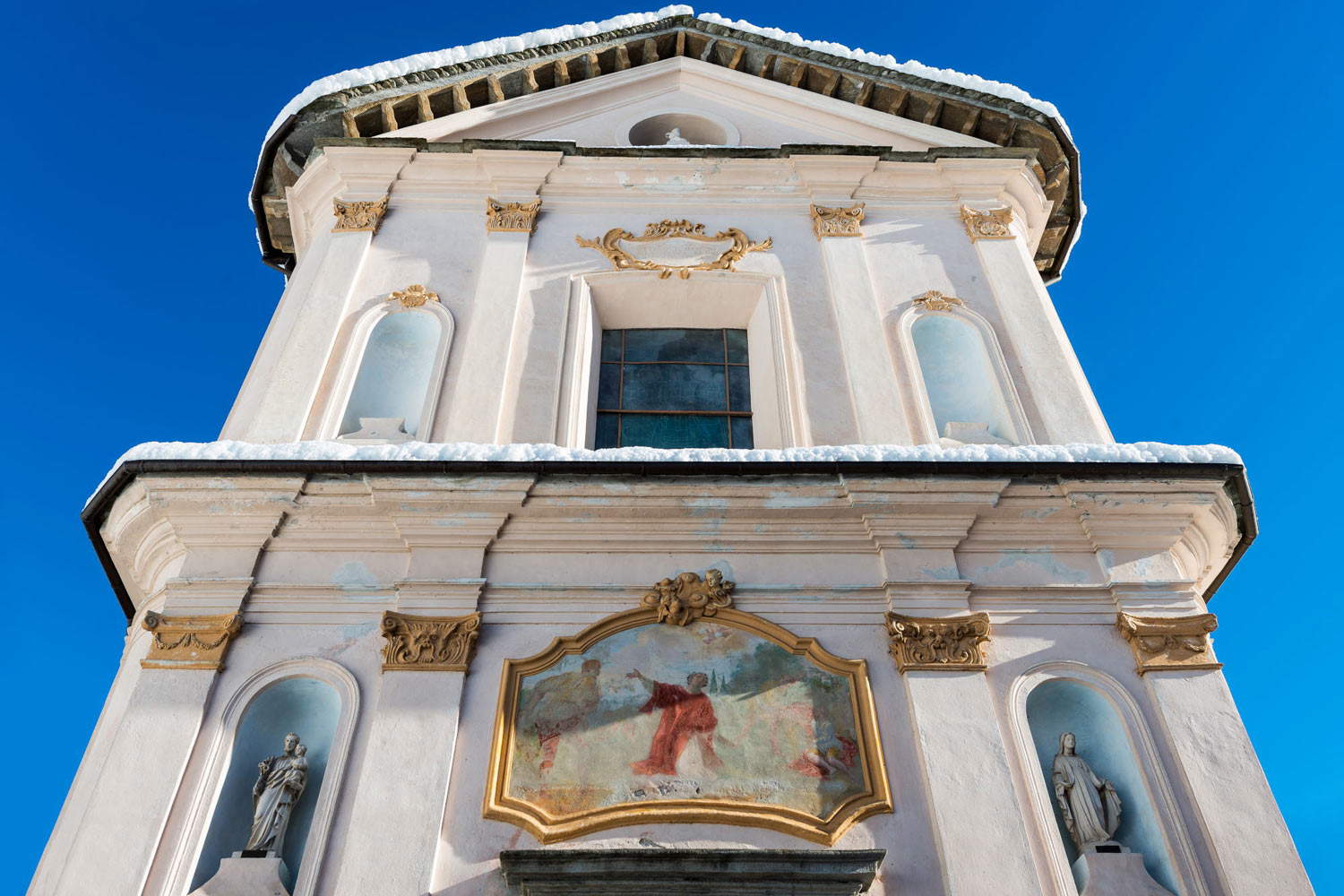
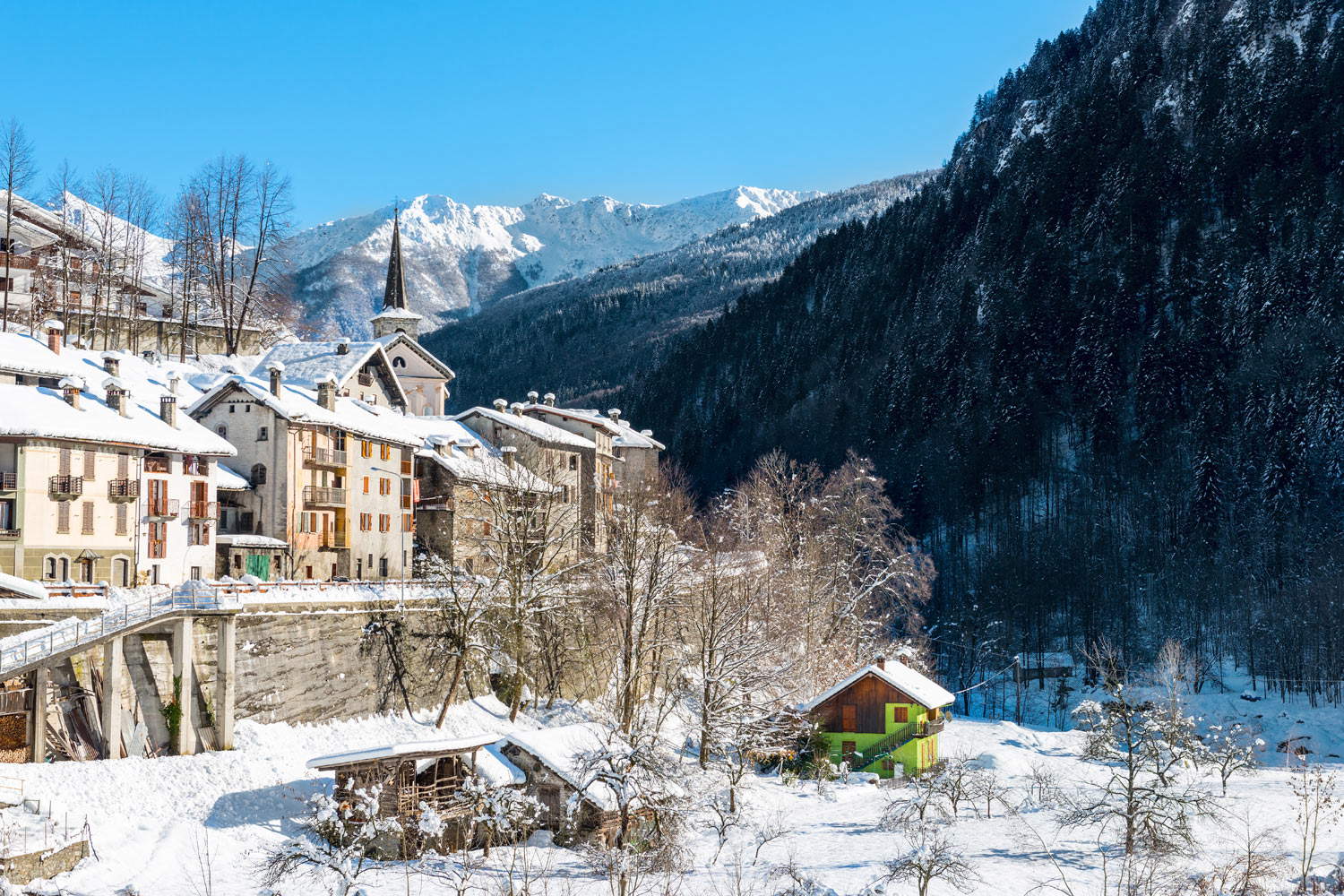
Dominating Campertogno, once among the most populous towns in the upper valley, the majestic Parish Church of San Giacomo Maggiore built on an earlier late Gothic church with its tall bell tower. The history of its construction is long and complex. As early as the 15th century there was a smaller church that was remodeled from the next century to the mid-18th century. In particular, at the end of the seventeenth century, the townspeople with the support of the bishop decided to commission a general makeover from one of the greatest architects of the time, Guarino Guarini. The latter sent a wooden model of his design from his workshop in Turin in 1691. The citizens became involved in the matter and eventually asked another great architect, Filippo Juvarra, to modify Guarini’s design. The new church was built between 1720 and 1732 with an almost elliptical plan, four side chapels and an apse. The interior holds wonderful paintings, including 18th-century frescoes by Carlo Borsetti in the choir vault and by Giovanni Milocco in the nave; and episodes from the life of St. James painted in 1832 by the Avondo brothers in the chancel. On the altar of Our Lady of the Rosary can be seen the fifteen Mysteries frescoed in 1879 by Campertognese artist Pier Celestino Gilardi. On the exterior facade, on the other hand, the frescoes of St. James completed by Bialetti but made thanks to preparatory cartoons by Campertognese master Camillo Verno can be seen.
Next to the structure of the church of San Giacomo Maggiore, stands, on its left side, the church dedicated to santa Marta, which also houses a museum of sacred art. Inside the church of santa Marta is the carved, gilded, and paintedwooden pyramidal altar made between 1709 and 1710 by Giovanni D’Alberto and Giovanni Mainoldo, which contains a sculpture of the Virgin by Gaudenzio Sceti from 1689.
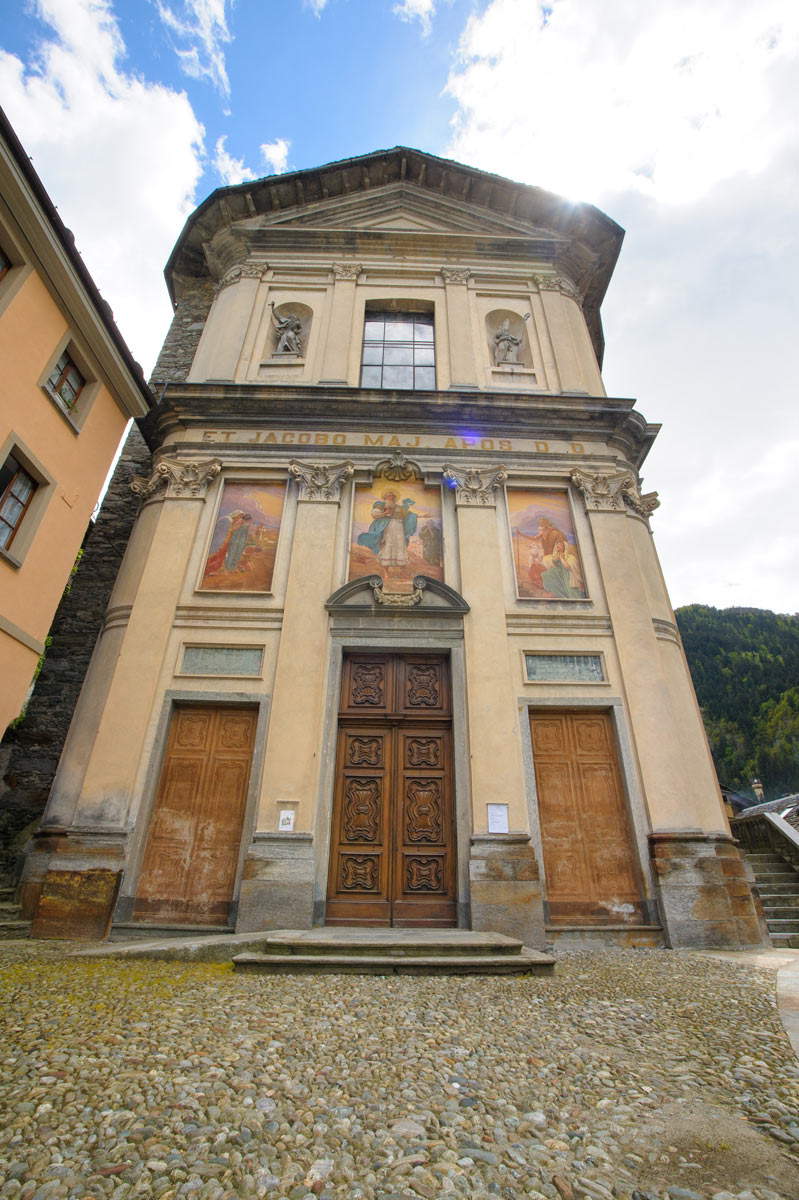
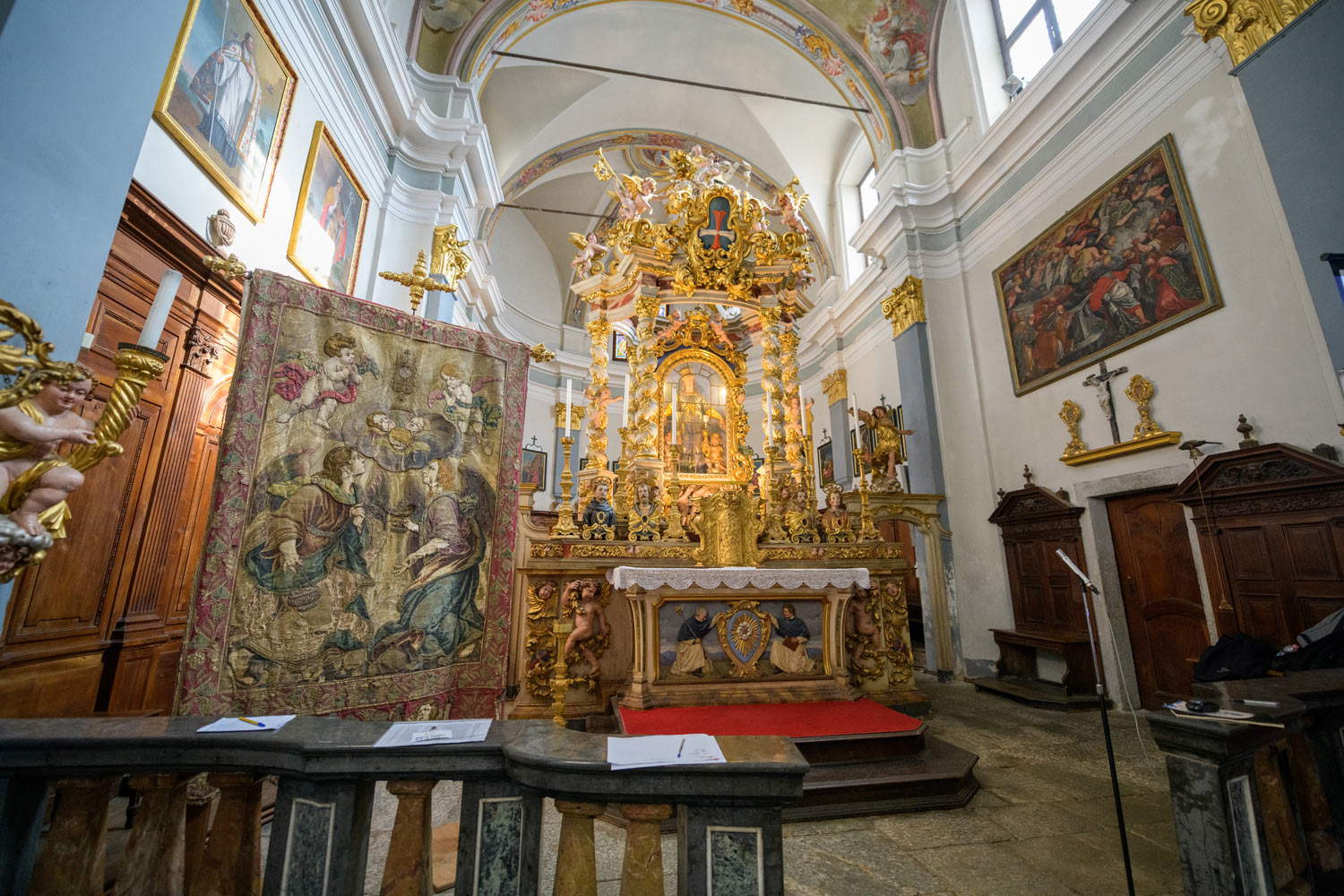

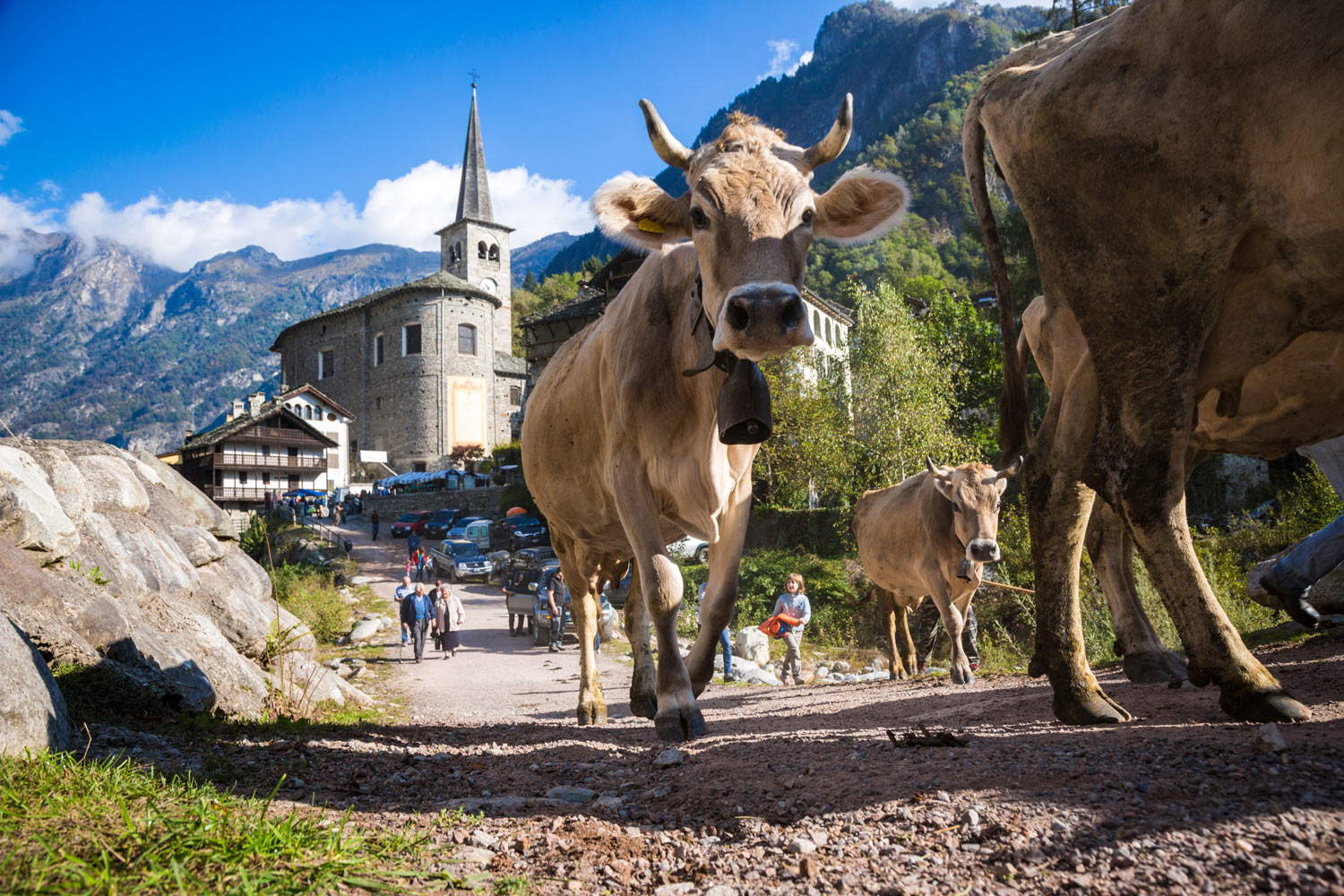
The center of the village of Alagna is dominated by the parish church of St. John the Baptist, which features a tall bell tower with a typical pointed spire. Built between 1505 and 1511, in Baroque times it was remodeled and enlarged to its present appearance. On the apse wall the Valsesian coat of arms is visible, namely the eagle on two rocky hillocks and the river in the middle, to which is added the inscription “Im Land,” meaning Alagna in the Walser language.
The façade has frescoes completed by the Avondo brothers in 1862 depicting scenes of the birth and beheading of the saint; above the main door is theAnnunciation. The interior, with three naves divided by gray stone columns, holds valuable works of art, such as the pyramidal altar made by Guala-Molino di Mollia in 1690 in carved, gilded and painted wood: it consists of several tiers in which episodes from the life of St. John the Baptist are depicted. The chapels contain a small wooden altarpiece from the 15th century, made by an unknown artist from the Swabian area, which takes the form of a portable cabinet whose doors are painted with figures of saints (St. Francis, St. Nicholas, St. Hubert, St. Pantaleon, St. Sebastian, St. George and St. Lawrence are recognizable), and inside are carved statuettes depicting the Virgin with St. James and St. Sebastian. Finally, in the chapel dedicated to St. Sebastian and St. Rocco is placed the sculptural group made in the late 16th century by Giovanni D’Enrico consisting of the crowned Virgin with the Infant Jesus in her arms and St. Sebastian and St. Rocco. The left altar, on the other hand, is dedicated to Our Lady of the Rosary, in which the Virgin is surrounded by fifteen panels painted with the Mysteries of the Rosary.
These are just a few of the splendid churches that dot the Val Grande, the most significant ones, but if you have the opportunity to travel through this valley you will realize how much beauty, little known to most, it holds. All the more reason to go on a discovery tour of this picturesque area of the Vercelli area.

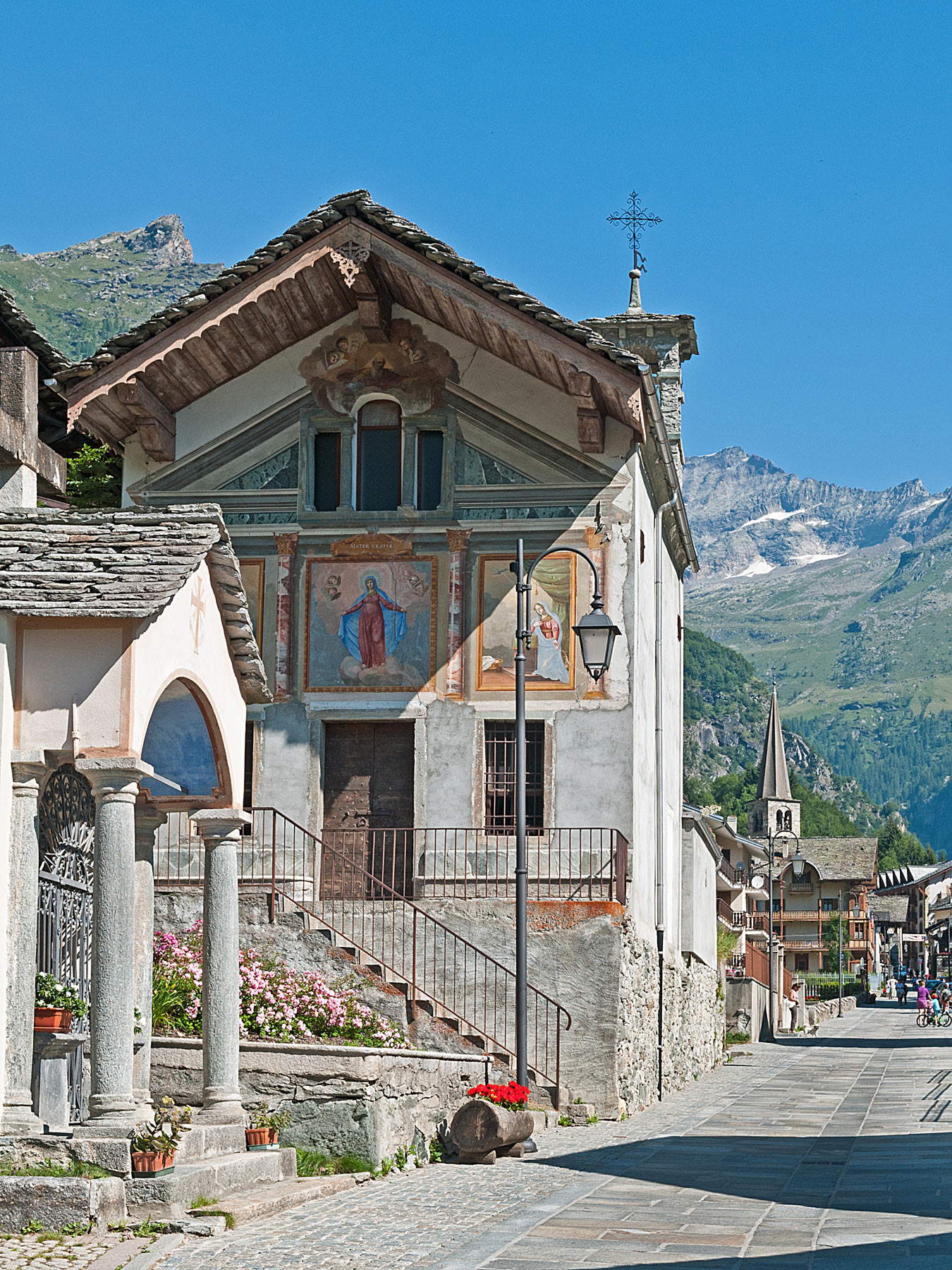
 |
| Val Grande churches: four little-known art treasures in the Vercelli area |
Warning: the translation into English of the original Italian article was created using automatic tools. We undertake to review all articles, but we do not guarantee the total absence of inaccuracies in the translation due to the program. You can find the original by clicking on the ITA button. If you find any mistake,please contact us.